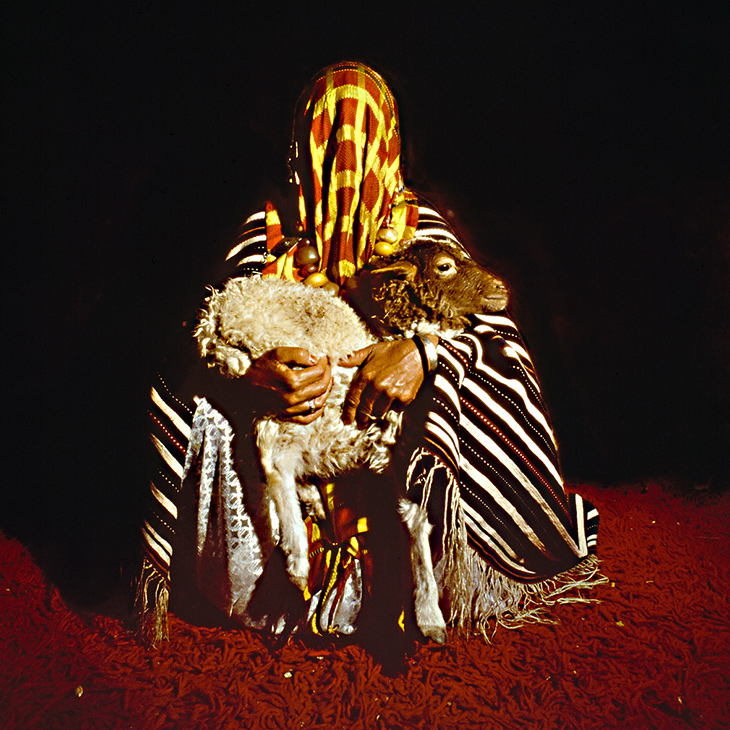
A bride from Imilchil, Morocco, 1993
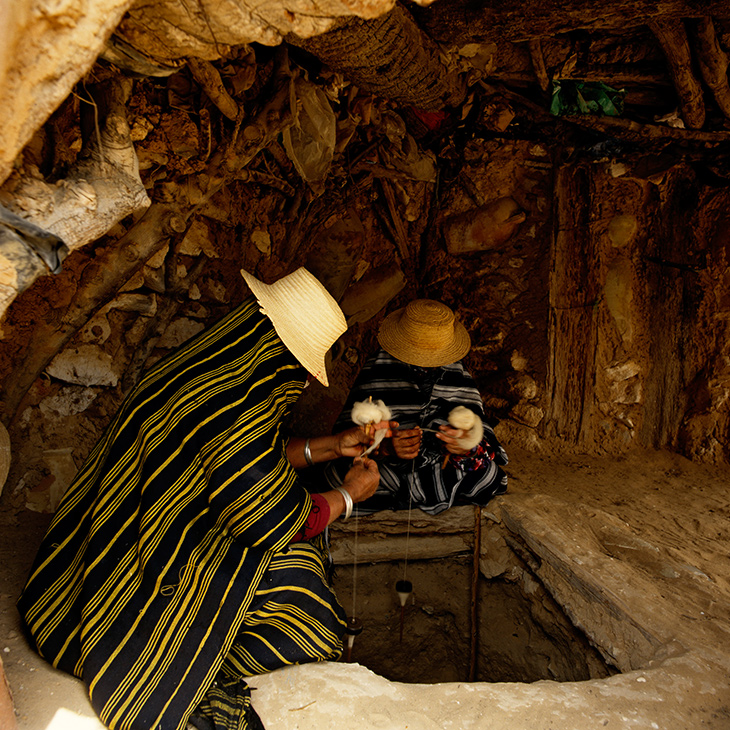
Berber women from the island of Djerba, whose husbands insisted they not be identified, spend their afternoons spinning wool in a low domelike structure built in the courtyard using broken pottery from the Djerba pottery industry. Men are barred from entering this private space. The spindle is dropped into the pit, rising and falling like a yo-yo without requiring the spinner to raise her arms. Tunisia, 1993
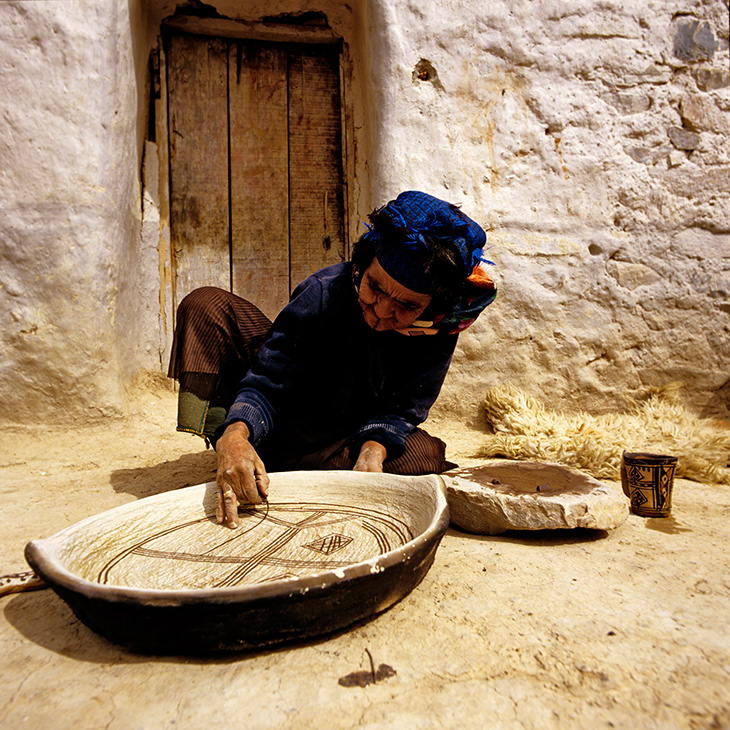
In the inner courtyard of her humble dwelling, Fatima Bint Lehsen decorates a large couscous plate. Beni Amar, in the Rif Mountains, Morocco, 1993
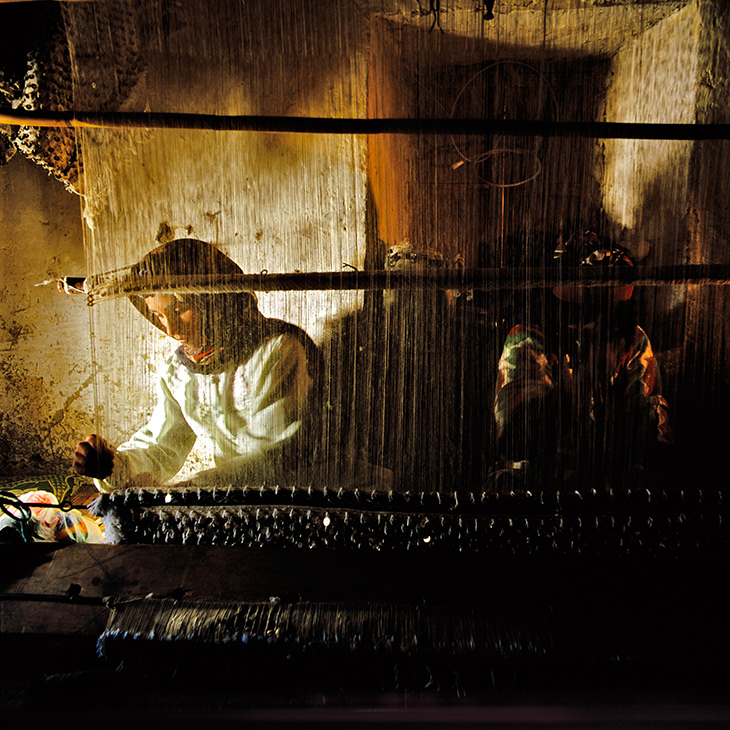
Fatima Khella of the Ait Brahim people weaves a traditional handira. Alamghou, in the High Atlas Mountains, Morocco, 1993
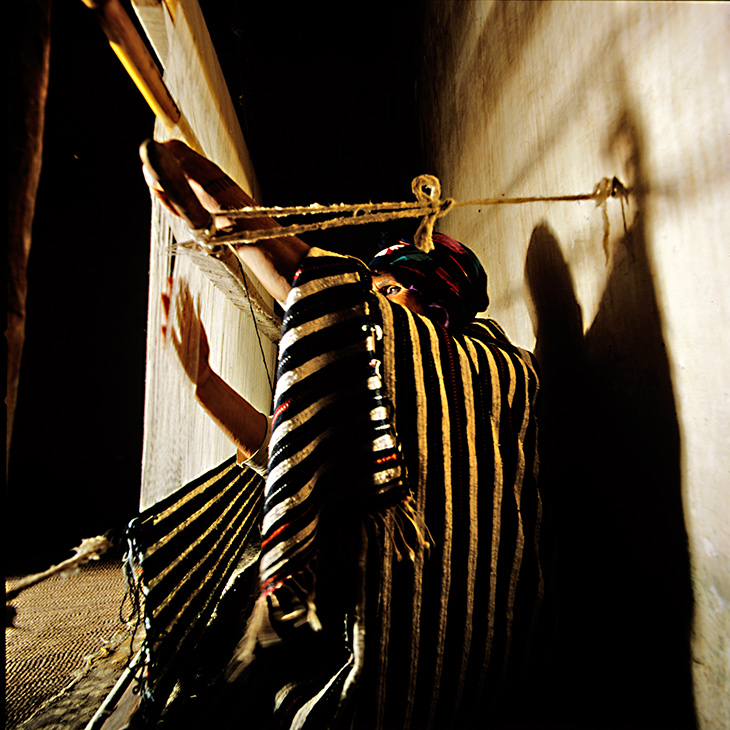
Aȉcha Oubenmou weaves a cloak typical of the Ait Haddidou people from the High Atlas Mountains in Morocco, 1993
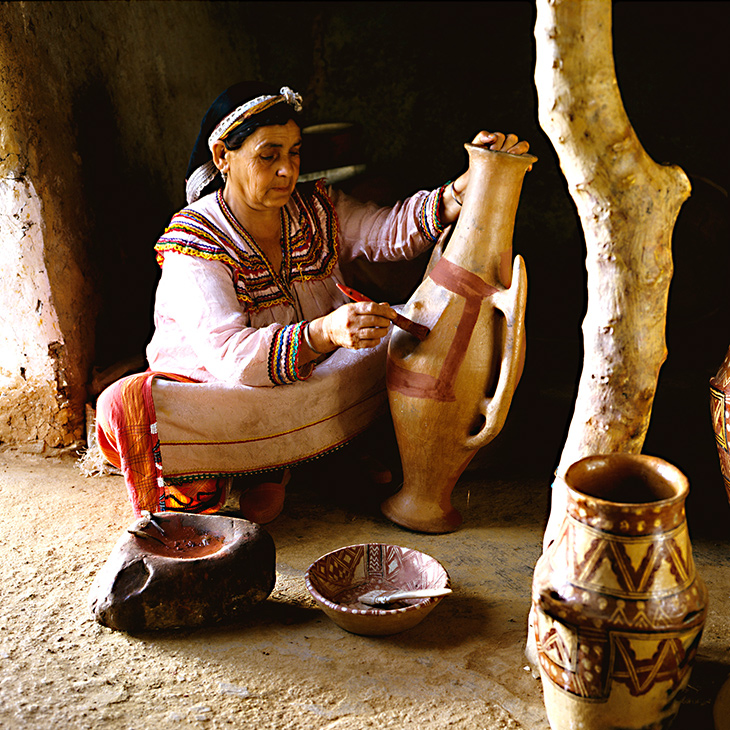
The Berbers of the Kabylia mountains still model and design their pots according to traditions dating back to ancient Roman times. Ouadhia, Algeria, 1993
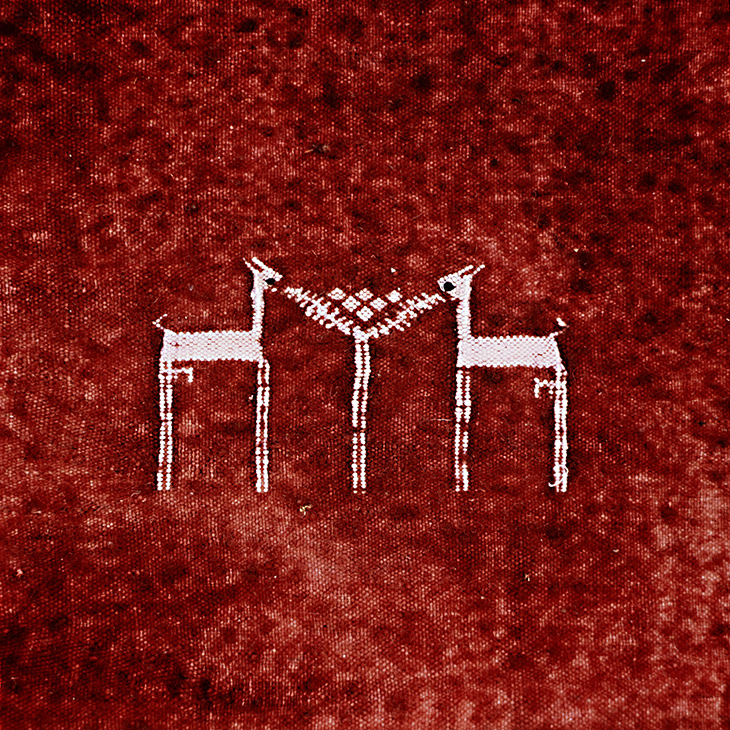
Detail from a bakhnoug, a large shawl woven and worn by women of the mountain regions of southern Tunisia. Two gazelles eating palm leaves decorates the otherwise plain central section. Tunisia, 1995
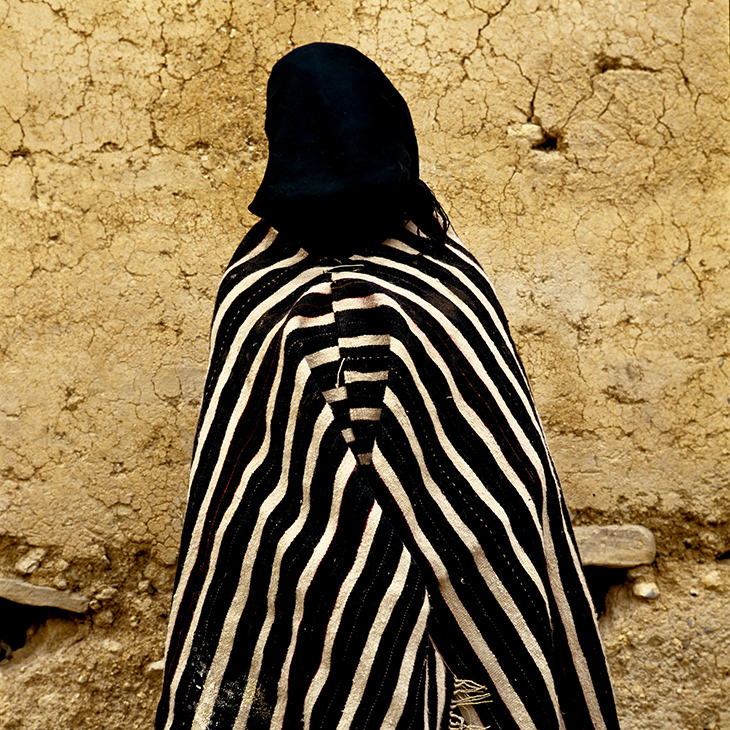
Aȉcha Moha Ait Kaider from Tilimi in the High Atlas Mountains wears a distinctive black-and-white handira. She receives strangers with her face covered, but after I spend the day photographing her and talking to her about her life and Berber customs, she reveals her tattooed face as a gesture of friendship and trust. Morocco, 1993
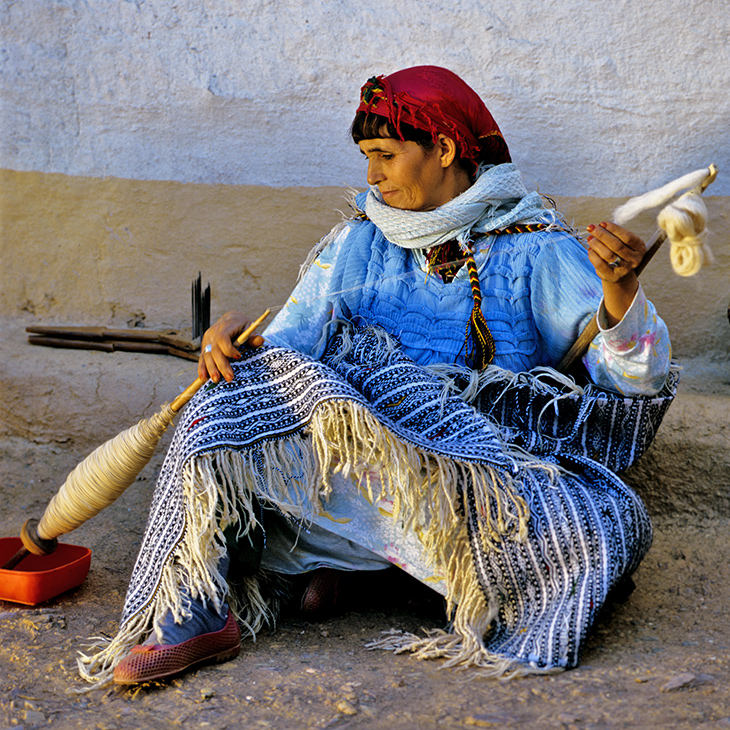
Zahra Belarbi spins wool using her thigh to control the long spindle. Middle Atlas Mountains near Oued Amlil, Morocco, 1994

In the remote village of Ait Mesbah beneath the Djurdjura Mountains of the Great Kabylia, this potter describes her work: “The motifs I painted on my storage jars identify me from those done by women of other villages. They represent fertility of the earth, a symbol of protection”. Algeria, 1993
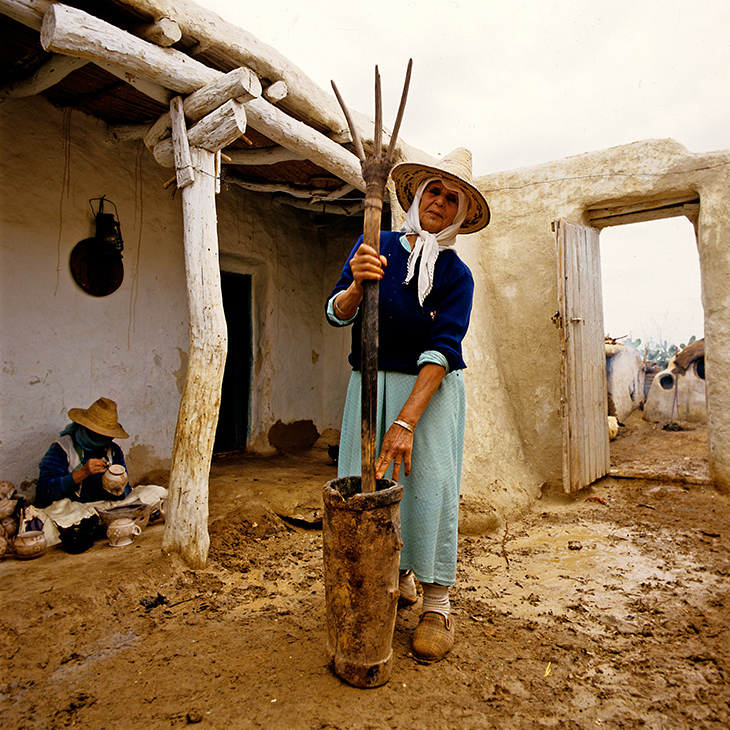
Fatiha Benamar helps her sister-in-law by crushing dried leaves of the fadis plant, which are then boiled to produce a yellow-green dye that turns black on firing. Tamazint, Morocco, 1994
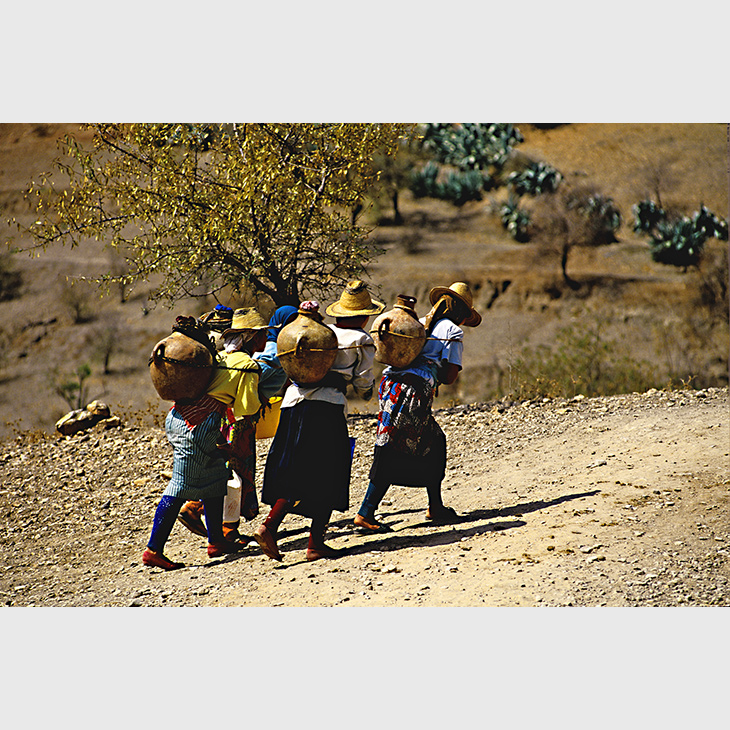
Large water containers are used by women for fetching, carrying, and storing water. Rural community of Beni Frassen, in the plains between the Rif and Middle Atlas mountains, Morocco, 1994
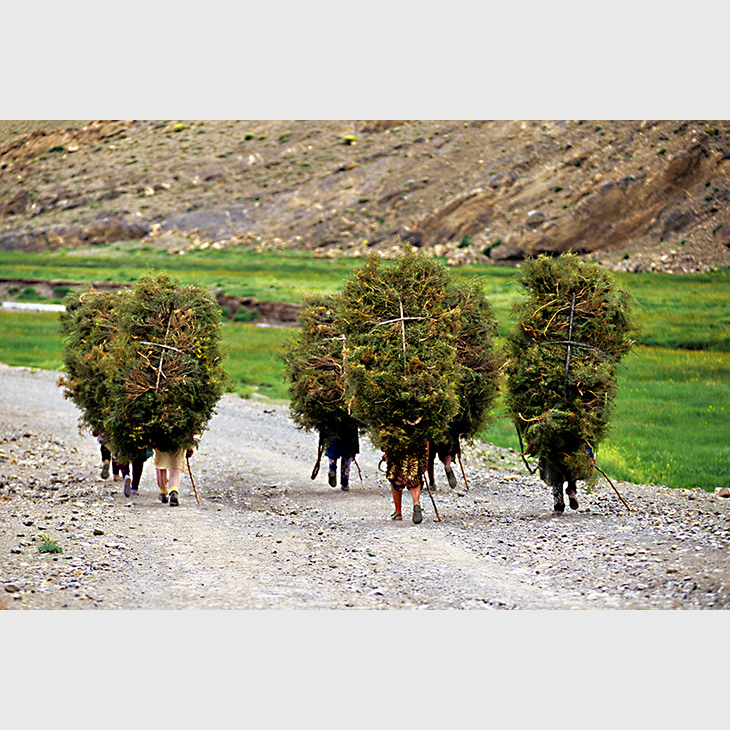
Women walk together in their most dreaded task - gathering firewood (sagebrush and thuriferous juniper). Their chanting reverberates against the barren hills. From a distance it is difficult to distinguish whether these “moving bushes” are carried by women or mules. Near Moutazili, Morocco, 1995
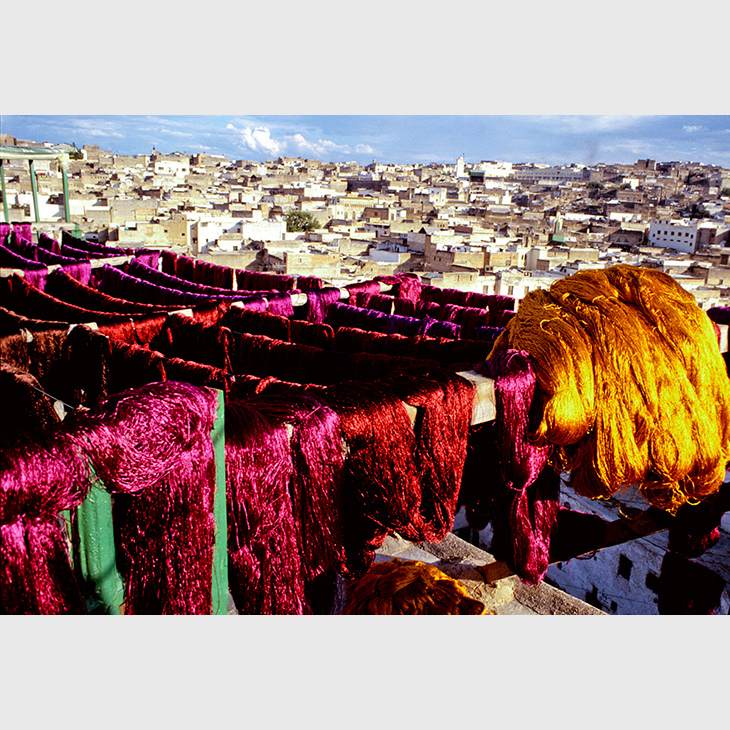
Skeins of synthetic fibers are hung to dry over a trellis on a rooftop above the city of Fez. Morocco, 1994
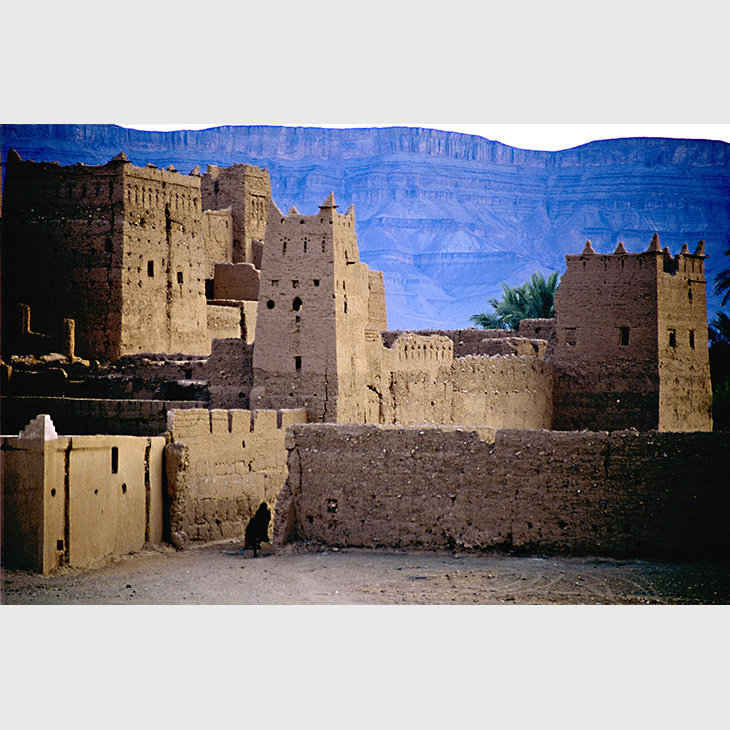
Typical adobe buildings found along the Draa Valley between Ouarzazate and the Sahara, built to be formidable and functional and to serve as Berber strongholds. Morocco, 1992














